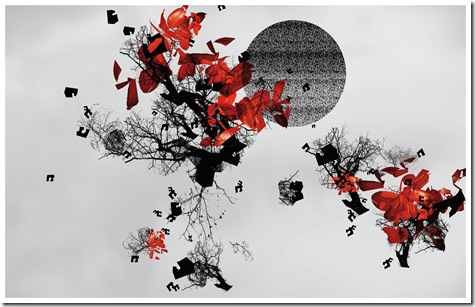Alexander Egger lived the first third of his life on the Italian side of the Alps in a little village where Ezra Pound used to spend his summer holidays. In his childhood Alexander was found playing with building bricks suspiciously often and spent time researching the life of ants while sitting for hours on a milk can in the middle of the street. He was truly impressed when he saw the sea for the very first time at the age of eighteen. He can’t drive even though he has got a driving license, doesn’t like eating, especially not vegetables, and likes people sometimes. He is not easily impressionable, but can fall in love with certain incidental gestures which are not intended for anyone at all. Shyness and discontentment with his own inadequacies provide him a strong driving force.
In 1995 he went to Milan, Italy, and created, among other objects, a number of dustbins. He met quite a few interesting bands there just before their first big album releases. He is still convinced of being personally responsible for their lack of commercial success because of the album covers he designed for them, yet he continues to believe design must never be art. He went to Vienna in 1998, where he still frequently steps in dog shit because of his habit of walking about with his head in the clouds. He stumbled into the advertising business by mistake. Two years later he started working for Nofrontiere as art director and later on as head of the design department. He is presently working in a variety of media on a range of cultural and commercial projects for either very small or very large clients. He plays music with the band. His work has been published in international magazines and books and has had exposure on every continent but Antarctica during the last year.
Satellites Mistaken for Stars
Design and Concept: Alexander Egger
22 x 27,5 cm
180 Seiten
4 c
Softcover mit Schutzumschlag
29,80 Euro (D)
30,80 (AT)
ISBN: 978-3-940393-16-6
Understanding the poetical potential of a refined everyday occurrence. Describing a disbelief in a fixed balance of power, normative aesthetics, and hierarchical contemplative concepts by taking a position and documenting a process of changing values. Objective elements with a translocated place of abstraction are extracted from the immediately visible. Intersubjectivity and metalayers avoiding a one-dimensional easy meaning, but offering a set of viewpoints instead. Giving up the distance represented by the artificial differentiation of marketable, selfsatisfied image-building in order to establish an open discourse regardless of the risk of being vulnerable. Activating the recipients, heightening their sense of awareness, and offering involvement and differentiation in order to shape an identity through friction with the surrounding system. Simple, open results animate the viewer to proceed further with a more complicated interrogation. Omissions raise new questions. Noise, superimpositions, failures and misunderstandings, disturbances, errors, interruptions, resonances, corrections, breaks, encroachments, details, notes, bits and pieces, details and space, emptiness, and silence delineate a
relational system of de- and recontextualisations.
Apparently unimportant everyday elements and processes, perfectly integrated into our daily life, adopted and completely assimilated, become banal. Changing the encoding,
or else the context, will bring them back into our field of vision. The construction of a subjective system by processing the external influences through deconstruction and exclusion and by suspending and breaking down relationships or establishing different ones. Interpretation and resignification. Varying of the existing rather than heading for the new. An amalgamation of the seemingly contradictory — of coinciding states, a transformation of stagnation into a movement: the moment of change. Shapes interact and react with each other. Individual parts create a new coherence that is visualised by adhering, judging, or simply dealing with it. Establishing a plan of action through a re-politicisation of micro processes: everything is equally important. At the same time, everything could also be different. The definite is obvious and therefore uninteresting. Things are not completely ascertainable through rational logic but are probably already outlined by means of a certain intuitiveness. Confusion, deficiencies, and surprises are weaved into the process as errors, interferences, patterns, and routines and imply an addition of concrete meaning. Contexts, conflicts, and confrontations spark images and impulses that are affected by the viewer’s imagination and personal experiences. The pictures remain transient, intermediate results of the development, as fields of possibility; so absorbing them constitutes a continuance and reprocessing.
You can get the book here:
http://www.rupapublishing.com/satellites



